There’s a Mercury Music Prize-winning band name if ever I heard one. This post is actually a long one about Anderson, CAP/TATE, British Council and Project-based learning – that didn’t have quite the same ring to it.
I attended Jason Anderson’s webinar last night on contemporary lesson planning and frameworks in TESOL (hosted by DublinTEFL). Really well-presented, very informative.
Watch the full talk here!
The webinar in 330 words
Anderson started by providing a good overview of traditional frameworks for lesson planning (PPP, TTT and all that), many of which are introduced on initial teacher training courses. He summarised some popular alternatives which are seen by some as more principled, student-centred, effective for dealing with emergent needs, etc (TBLT, Dogme). He acknowledged that most of us probably take (or would like to take) an eclectic approach in practice.
Then he set about addressing a misconception held by many – that current(ish) ELT coursebook units tend to be built around the more traditional frameworks, notably PPP. He briefly mentioned his own research into the frameworks used in coursebooks and showed, with some clear examples, that the ‘coursebooks-follow-ppp’ assumption isn’t true.
Anderson explained how recent coursebooks tend to follow what he terms a CAP model (Context-Analysis-Practice), or lend themselves practically to a CAPE model (+Evaluation). This wasn’t a case of ‘Anderson, the CAPEd Crusader of Coursebooks!’ There was no staunch defence of coursebook methodology, but perhaps a nudge to view such resources with fresh eyes.
The main point of the talk was to introduce an alternative framework for initial lesson planning – Anderson’s TATE. This can be used by teachers, particularly those using prescribed resources in certain contexts, and may also be useful for teacher trainers as a new framework to consider introducing on ITT courses:
This framework was proposed for various reasons, examples being:
- It aligns well with current coursebook methodology, and can serve to support practical application of coursebook resources.
- It’s flexible, and there is scope for dealing with aspects of learning that are perhaps addressed more effectively through alternative approaches. The proposed framework is open to the possibility of stages for incidental form focus, emergent language focus, and so on.
- It recognises that there is no clear agreement when it comes to interface, and seeks to accommodate both explicit and implicit learning.
- It acknowledges the commonplace yet sometimes overlooked practice of translanguaging in ELT classrooms.
- It’s a framework that can be applied at both lesson and scheme of work level, and could align with in-vogue approaches like CLIL and PjBL (note: I disagree with Anderson’s take on PjBL as a product approach, I feel it’s more product-oriented yet the process is the learning)
Anderson concedes limitations with the framework such as whether it is suited to YL contexts.
Commentary
I find Anderson refreshing. I imagine that some teacher trainers will curse the guy for trying to introduce yet another framework, another acronym, whatever. For me though, he’s pretty much bang on with a lot of his points.
It was evident for me from the outset that Anderson has perspective. He understands that plenty of teachers are working within institutional/cultural/contextual constraints, and that certain approaches just will not either work or be embraced. Nevertheless, in providing a framework that seeks to enhance and perhaps optimise teaching from prescribed resources, he also acknowledges the alternatives, pointing out how and where these might appear in a lesson or lesson sequence. TATE is really well-thought out, and equally as astute as Anderson’s coursebook analysis. So much so, in my opinion, that Anderson’s concessions in his TATE article about this framework being less applicable for experienced teachers are simply too humble.
However.
Covering all bases can be tough. One good: It is laudable (to use the way A refers to Ellis) that Anderson acknowledges the importance of translanguaging, so much so to embed it in a framework potentially aimed at early career teachers. One meh: It is also questionable to suggest that a framework that could be applied at lesson level only could result in automatization of target features on completion of the task stage. Over a sequence, with enough repetition, maybe. Although this would depend on the target features I guess.
In Anderson’s articles on both CAP and TATE, it is the summarised table forms of his ideas that do him a disservice I think…
Take a look at these abridged examples of CAP. You can see very well how these lend themselves to a task-supported syllabus, and they are pretty much the skeleton of most myClass lessons I used to write at the Council. But these examples portray C – Context is a very reduced manner. They don’t marry with the coursebook examples Anderson provides in his talk at all and they ignore the massive importance Anderson himself places on front-loading based on context.
He does the same in the TATE summary table. The initial T – Text is not simply about introducing a text to drive the lesson. The pre-text tasks and the context builders are the real crux, as they will shape how the lesson evolves – gaps that become evident, language that is already known, etc. While also giving opportunity for incidental practice of other language that may be recycled (as Anderson mentions in TATE article). Despite Anderson providing a very insightful commentary on the importance of context, the TATE acronym reduces Anderson’s ideas so that they are confused with text-based presentation – as someone in the talk highlighted.
I genuinely wish he’d have called his framework POTATOES, as it gives TATE the ‘fluff’ it deserves:
Pre-text tasks and…
Orientation to topic as a whole
Text
Analysis
Task
Open-discussion on task content
Evaluation – extending discussion on content to language, emergent stuff, etc
S… I don’t know. Something intelligent. Sort out what’s needed next? Scrap the bits that didn’t work? I didn’t think the S through.
Jason Anderson consulted for the British Council? (Evens)
So, it’s either one of the biggest coincidences since global ELT resources began, or it’s fact – Jason Anderson consulted on British Council Secondary Plus.
Flick through most of these mags and you’ll get the TATE model in action…
They often start with two massive context builders with written and aural texts. Here’s a reading example…
They’ll have lots of the features Anderson mentions with the merged text-and-analysis sections, here you’ve got some priming, meaning in context, plus there’s integrated skills there, etc. The listening does the same.
And then bam, you’re into a task relevant to the context, in this case it was preparing a viral ad campaign. I won’t share that as it was a weaker part of the resource to be honest. Not enough context. I used a simulation to bulk that out for my learners, getting them to respond to a semi-authentic ad brief I made up for Lactasoy. Bit more of a hook.
That one was just for Matt Noble! Anyhow.
I’ve spoken about this particular resource before and, ironically given what I said about Anderson’s model, it needed bulking out with pre-text activities (my viral context builder was part of that, lesson in itself and an important point I guess that Anderson’s model is full of mini-lessons really).
So, right, Anderson comes along with a PjBL article for ETpro recently and given this is the supposed approach used in Secondary Plus, I’m willing to bet the earnings from my last writing project that Anderson had a hand in this one. If he didn’t, it’s a highly TATEd course before we all knew what that even meant.
Summary
Regarding the webinar, this is an excellent watch – great choice DublinTEFL. Regarding Anderson’s coursebook analysis and CAP, certainly interesting and from a writer’s perspective I feel like ‘Ahhh, you got us!’
Regarding TATE, I think there are a lot of teachers I know that will relate to this framework. For me, it’s a great attempt at a principled and evidence-informed framework that is likely applicable to many contexts. It’s seems it already has been 😉 And the caveats on how it’s not a universal framework are refreshing.
View Jason Anderson articles on CAP and TATE here.
Categories: General, reflections, reviews, teacher development

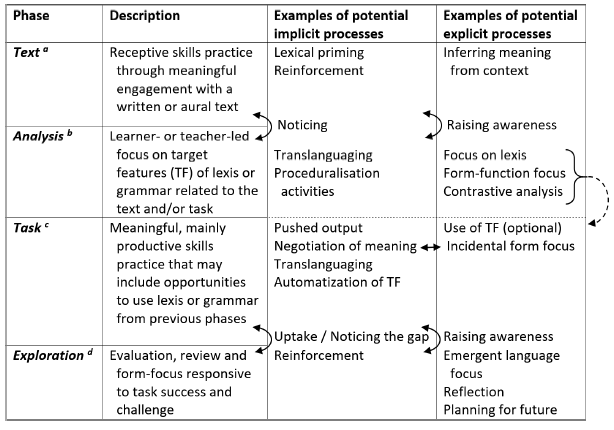
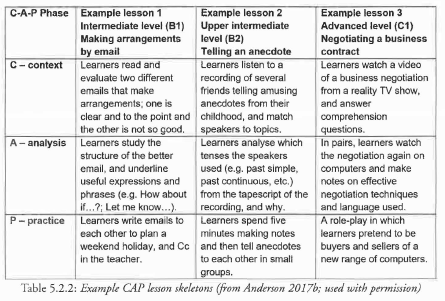


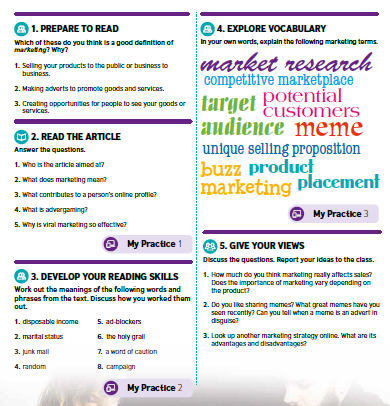
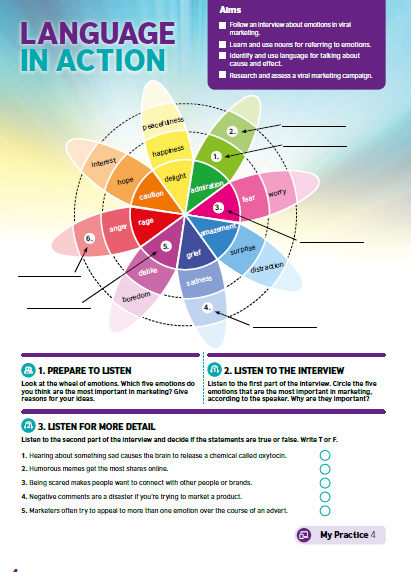
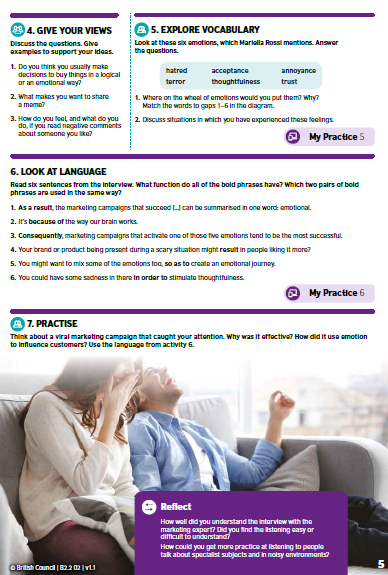
I’m writing this before having watched the video or read the original articles, but a couple of thoughts …
S… I don’t know. Something intelligent. I can’t promise intelligence, but it struck me that your POTATOES model could be a useful training tool if the final ‘S’ could look beyond the lesson itself and look for Syllabus connections.
The phrase is a bit clumsy, but I just mean how the content of this lesson looks back to and builds on earlier ones and forward to the following ones, especially in relation to assessments assuming there will be some of some kind (in my experience, all courses have some kind of end of course test even if it’s a relatively low stakes progress check).
In general though, it seems as if Anderson is on to something here because his model(s) more accurately reflect what many experienced teachers do and, as he points out, what coursebooks tend to do – those coursebooks having been written almost exclusively by what it’s fair to say are experienced teachers.
What would be more interesting to me in a way would be to see whether or not an older model, PPP say, could also be applied.
This is from memory so could have some details wrong here, but I think Rose Aitken’s book followed pretty much a PPP scheme:
PRESENTATION would involve building up a context and background with the students.
For instance, showing students a picture of a delapidated house and asking them general questions about it such as:
How does the house look to you? (e.g. “old”, “dirty”, “horrible”etc.)
Who lives here? (e.g. “an old man”, “a witch”, “drug addicts” etc.)
Then specific questions, seeding in useful vocabulary:
What’s wrong with the door? (e.g. “It is broken”; “It has no lock”)
What’s wrong with the window? (e.g. “It is broken”; “There is glass on the floor”)
Then students are shown a picture of the same house, now done up, in order to elicit from students statements along the lines of “The window’s been fixed”, “The glass has been swept away”, “The walls have been painted”.
If/When students fail to produce the target language, that’s the point at which it is introduced – a language gap has, so the argument goes, been opened up and this is the language used in that kind of contextual space.
The meaning having been established, the form – question, postive, negative, plural, singular – is then produced on the board.
PRACTICE I won’t go into detail here, but generally form-focussed drills (written or spoken) of one form or another introduced here, and often with necessary incidental vocabulary (if you follow me) for the task then to follow.
PRODUCTION Again, I won’t go into detail, but some kind of context – Before and After pictures – for using the language introduced in the previous two phases.
Although the last stage does not explicitly call for exploration, if exploration includes a “review” of the task then there would be corrective feedback in there – as it would have been assumed to be in there in the Presentation section, too (e.g.”That house – inconvenient” / “Inconvenient? or Uncomfortable?” etc.).
I’ve outline this at length because my point is that the lesson I’ve outlined here within a PPP framework could, I think, very easily be poured into a TATE one without very much change:
TEXT – Not a reading or a listening text, but the first part of PRESENTATION I’ve suggested here is an open communication between teacher and students. We all know quite a bit of sardonic humour, even at A2 level, can come out in just such conversations and I think we could argue that this is as much a context setting exercise as me showing them a video of a broken down home from one of those home transformation entertainment shows.
ANALYSIS – iI’s tucked away in the latter half of PRESENTATION in this model, but “learner or teacher-led focus on target features” is absolutely there.
TASK – This, I suppose, is arguably where PPP can be said to fall down in that the PRACTICE section is very much traditionally form-focussed and often presented within what might be seen as contrived sentences.
However, “Meaningful” is an exceptionally slippery concept. Many so-called ‘real world’ tasks aren’t that at all, but rather are abstractions that in many ways are every bit as contrived as the gap-fill sentences they have been brought in to replace. (I won’t go into the reasons why but will assume they are apparent).
EXPLORATION – This part does fall outside of PPP although to a degree that feels like criticising an orange for not being a pear. The TATE model encompasses (or seems to encompass) more of the lesson structure than PPP alone was intended to deal with.
For instance, in that same PPP lesson I’ve outlined here, that could reasonably be expected to take up the first academic hour of about 45-50 minutes. The second academic hour could then be spent on a role-play – for example:
Two flatmates. A is neat and tidy, B is scruffy and lazy. A has asked B to tidy the apartment while they were out shopping. B has spent the whole afternoon on their X-Box.
A “Look at this mess! You haven’t done anything!”
etc.
There’s much to criticise in PPP – the main one being that the language supposedly used in the contexts generated quite often isn’t the language actually used by native or proficient speakers in those same contexts.
But again, that seems to be a case of complaining that an orange isn’t a pear.
PPP is not really in the business of saying “Use this language when you see a broken window on a knackered house”, but to illustrate distinctive features of grammatical concepts as clearly as possible without (or by and large without) the use of translation.
Anyway, ultimately my point is that frameworks are generally a means to an end – a teacher training tool that gives shape to a lesson.
More rigorous criteria would be needed to determine whether any given lesson can be characterised as PPP or TATE (or something else) – and since in many cases that is not the purpose, perhaps it does not matter so much?
All that said, I do think TATE is probably a clearer and more up-to-date framework of that kind.
LikeLiked by 1 person
Cheers for the detailed comment!
Re: ‘POTATOES’ ha yes! We have an ‘S’! Syllabus connection a pretty good shout I think. What with all the talk of spiral syllabus these days it’s worth encouraging teachers to think about the bigger picture a bit more.
Good PPP example, and fits with what Anderson was saying about images for context in some of the earlier coursebooks he reviewed (I actually like that lesson flow, might use it, cheers!). And just as with Anderson’s Text section in the framework not including the full process (like the pre-text prep), the term PRESENTATION just narrows in on the core purpose of the stage without highlighting that a lot of activities take place around that. In my view anyhow.
Do you have a reference for the Aitken book? The example you gave deffo compatible with TATE, or basically ‘it’ – is Anderson reinventing the wheel? It’s possible, but I’d say he might be doing so with the best intentions.
Regarding ‘does it really matter?’ Well, in many ways no. And I’m as guilty as anyone of obsessing over these frameworks as if they are rigid, fixed, inflexible etc. ‘This isn’t PjBL!’, ‘This is a weak form of TBLT!’ Etc. I do think the frameworks are useful for early careers teachers and important to introduce on CELTA etc as they give some structure/principles to the proceedings. As we gain experience, I imagine few of us follow a framework strictly and probs pic and mix it in some ways.
So, useful for training, maybe. The problem is, as Anderson highlights, the misconceptions. And perhaps (he hints) how these are ‘politicized’ (within ELT I mean!) or an anti- or pro- agenda is assigned to them. We were using a task-supported syllabus at the British Council and it was often referred to by teachers as ‘glorified-PPP’ as if it would be the worst thing ever for it to be associated with such an unprincipled approach. ‘Pure’ TBLT on the other hand was almost some holy grail for some teachers! A lot of that was teacher egos really, not in response to what learners actually wanted or needed 😦
LikeLiked by 2 people
Thanks for replying (not to mention wading through that very lengthy post of mine!).
Here’s the Aitken book:
Teaching Tenses: Ideas for Presenting and Practising Tenses in English by Rosemary Aitken – I can’t find the original date, but it was on the reading list of the CELTA I took at IH London in December 1996 so it must have been around for a good few years before that I’m guessing – late 1980s, early 1990s maybe?
And just as with Anderson’s Text section in the framework not including the full process (like the pre-text prep), the term PRESENTATION just narrows in on the core purpose of the stage without highlighting that a lot of activities take place around that
Yes, this is really important, I think.
I actually laughed out loud at the comment on teachers who saw PPP as being “the worst thing ever for it to be associated with such an unprincipled approach”
Geoff Jordan, as you likely know, is very down on PPP, but he’s far from alone in that.
He presents a strong case for it of course, but there is a tendency to straw-manning, exaggerating the weaknesses to make his points. To be fair, part of that is just good rhetorical style, but I’m not sure all of those who hear him realise that and take his comments more at face value.
I’m not making any calls to have PPP revived, but I do think it’s important to recognise that it’s just not that bad. In fact, I’d go further and say it’s actually quite useful for lots of reasons.
The problem is, as Anderson highlights, the misconceptions. And perhaps (he hints) how these are ‘politicized’ (within ELT I mean!) or an anti- or pro- agenda is assigned to them …. ‘Pure’ TBLT on the other hand was almost some holy grail for some teachers! A lot of that was teacher egos really, not in response to what learners actually wanted or needed
Yes, it’s quite a thing, isn’t it?
LikeLiked by 1 person
If you’ll allow me, Peter, I’d be interested to learn from “nmwhiteport” (whose comments I always enjoy and many of whose views I share) what evidence he has for the assertion that I exhibit “a tendency to straw-manning”.
As I understand it, using a straw man argument involves distorting or oversimplifying an opponent’s argument or position in order to refute it. An example is when Anderson says “Jordan rejects explicit grammar teaching. Research shows explicit grammar teaching can be effective. So Jordan is wrong”. In fact, what Jordan says is that basing syllabus design on explicit grammar teaching is inefficacious, and what the research shows is that while SLA is predominantly a process of implicit learning, and that most language knowledge is not the result of turning declarative knowledge into procedural knowledge, certain types of explicit grammar teaching (e.g., Long’s FOF) can be extremely efficacious. So the straw man argument involves misrepresenting both what Jordan says and the evidence which is supposed to refute it.
I try hard to avoid straw man arguments myself, and I hope “nmwhiteport”, if he gives examples, will be fair enough to distinguish between examples of my use of straw man arguments and my use of rhetorical devices, including sometimes badly-considered, comments.
Thanks, Peter, for a stimulating discussion, and (if you do!) for allowing this additional comment.
LikeLike
Hi Pete,
Why does Anderson refer to TATE as a curriculum design framework and NOT a lesson planning framework, when the CAP is itself referred to as a lesson planning framework? Is that because Text in TATE would be used more as an extensive skills practice rather than just context?
Thank you!
Anthony Schoch
LikeLike
Good question – I can only give my interpretation based on reading those articles and the talk. Maybe we can get Anderson to comment…
From my understanding, yeah the CAP seems to be referred to more as a lesson planning framework, esp in the examples I shared in the post. They make it seem like its at lesson level for sure. However, when Anderson talks about the CAP framework used in coursebooks, he does point out that the activities might take place over more than one lesson. I find that true myself – sometimes those early context building activities in a coursebook unit (if they have them!) can evolve into much more. Still, I can also see how a CAP framework could be a complete lesson flow under certain constraints.
The TATE, well, possibly but I think the main issue is the depth of focus in the Text section. In the talk, Anderson said that what makes this NOT simply text-based presentation is the use of both listening and reading at that text stage. Yeah, I think these texts can be used for integrated skills practice, not just context building, in which case they might take longer and happen across a sequence of lessons. I guess it depends how they are used.
I mentioned in the post that some of the stage aims might be ambitious for a one lesson sequence, like automatization of TF, and seem more plausible if the model is applied as a scheme of work rather than applied only at lesson level. The evaluation stage seems to be a given in TATE (ha, can you imagine teachers being taken seriously if there was no E and they referred to their lesson as TAT, lol). That evaluation would likely take a while for me and go off on lots of tangents that I probs couldn’t fit in one lesson. It would also inform what comes next, so I guess with that in mind the thoughts are more with sequence and fit rather than with one lesson. CAP has CAPE too, but the Evaluation is seen as optional I think.
So in a nutshell, I’m not sure but I think you might be on the right lines with the extensive (or maybe integrated) skills practice you mention.
Cheers for comment 🙂
LikeLiked by 1 person
You congratulate Anderson for his careful “research” (examining some top-selling General English coursebooks) which refutes my suggestion that coursebooks are based on a PPP approach, by demonstrating that, in fact, they are based on a Contextualise – Analyse- Practice sequence. Surely this is not as important as you and Anderson seem to think it is. Anderson admits that coursebooks adopt a synthetic syllabus, which cuts the English language up into hundreds of “items” (grammar, vocabulary, pronunciation, lexical chunks, ..), decides on the order, and then introduces and practices them one by one in a linear sequence of activities in a linear sequence of units. . That the first bits of each unit can be grouped together as “context”, followed by “analysis”, followed by “practice” does precisely nothing to change the essential organising principle of synthetic syllabus, which is that you chop the language up, and then explain one bit after another to students before continuing with activities aimed at practicing what has been contexualised and explained (or “presented” as I use the term). Such an approach makes the following false assumptions:
(1) learners will learn items of language in the order that those items are “presented” (or, if you prefer Anderson’s terms, “contextualised and analysed”) in the coursebook;
(2) that knowledge about the language (declarative knowledge) is a necessary prior step in getting knowledge about how to use the language (procedural knowledge);
(3) that declarative knowledge converts into procedural knowledge through practice.
The Situational Approach to second language teaching is the most durable and influential example of the PPP approach in the history of ELT. Introduced by A.S Hornby in 1950, it rested on the principle that the language to be presented, practiced and produced in the classroom must grow out of situations, real or imagined. So, for example, to teach the structure “too + adj. + to”, the teacher might create situations where a book she holds is too big to fit in her bag; or it’s too cold to go outside; or she is too young to remember the war. This approach is what drives General English coursebooks today.
The “context” Anderson talks about is the presentation of a situation, in the form of written / spoken multi-media texts and graphics where a particular grammar point and / or bits of vocabulary and pronunciation are embedded. The “analysis” is where the grammar and vocabulary are then explicitly taught. Only after that are students asked to produce and practice the new items which have been presented – or contexualised and analysed if you prefer.
I think you do a good job of pointing out how misleading Anderson’s summaries of CAP and TATE are.
As for Anderson’s TATE, it escapes none of the criticisms that are levelled at all synthetic syllabus types. Anderson is well-known for his cherry-picking of bits of SLA research which support an emphasis on explicit teaching, and for misrepresenting the robust research findings of 60 years of interlanguage development research. He might impress you, but he does not impress many SLA scholars, particularly not those who have taken the trouble to do the research and to carefully read and evaluate the literature. Anderson skims the surface, feigning an understanding of interlanguage development, ignoring the consensus among SLA scholars that implicit learning drives SLA, acting simply as an apologist for coursebook-driven ELT.
LikeLike
It’s the G man! A second visit to my blog. Awesome. Thanks for reading. Apologies, I’m going to have to pick certain parts of your comment to respond to as it’s a lot of food for thought and I’m teaching in a bit!
Your bits in the quotes:
‘Anderson skims the surface, feigning an understanding of interlanguage development’
Maybe. I’ve only read about 5 articles by Anderson. There was little mention of interlanguage development, so I can’t judge whether he feigns understanding of this process. Sounds harsh though?
‘… ignoring the consensus among SLA scholars that implicit learning drives SLA’,
The consensus you mention is certainly acknowledged in Anderson’s model. See the column in the TATE for stages that relate to implicit processes. However, within that column, some of those stages (see procedural-automatization across Analyse-Task) do suggest that Anderson takes a ‘DECPRO’ stance as you mention in point 3. So really, the ‘implicit processes’ column is an attempt to make the TATE informed by SLA research consensus, plus includes a nod to dual processing theory/DECPRO etc to hedge? Would that be fair?
It feels a bit rigid to talk of ‘knowledge’ as distinct from the systems that help us acquire it. I’ve mentioned before that the idea of declarative/procedural systems as connected in the sense that one precedes the other is attractive but perhaps simplistic/convenient. You may remember I stated my views as partly aligned with Ullman, who acknowledges that the such systems operate independently, and that knowledge acquired through the declarative system may be serve as a compensatory strategy while the system helping us acquire procedural knowledge plays catch up.
This may sound crude to an SLA expert such as yourself, but it perhaps explains why Anderson’s model is attractive to me. It attempts to synthesise two underlying processes that may contribute to SLA and explain how to address these in a principled way in the classroom.
Re: your wording
You accuse Anderson of cherry-picking research to fit this end. I think we are all guilty of that at times. Consider your response to nwhiteport in which you state ‘certain types of explicit grammar teaching (e.g., Long’s FOF) can be extremely efficacious’, yet you fail to highlight that explicit FOFsssssssss according to Norris and Ortega (2000) may also be efficacious. I can’t speak for nwhiteport himself, but straw-manning does seem to come from your rhetoric:
‘Anderson is well-known for cherry-picking…’: among who? Perhaps ad hominem
‘…acting simply as an apologist for coursebook-driven ELT.’ Ad hominem at least?
‘feigning understanding’ etc
‘He might impress you, but he does not impress many SLA scholars, particularly not those who have taken the trouble to do the research and to carefully read and evaluate the literature.’
Definite straw-manning to reduce Anderson’s arguments to lack of scholarly acumen despite his considered approach. These type of comments don’t really further discussion, all they do is make me think ‘right, let’s catch Geoff out by mentioning how he couldn’t even get the names of coursebooks right in his recent article in ELTJ’ – that’s ‘careful research’ for you.
See, it gets us nowhere.
I do congratulate Anderson for his attempts to mediate between research and practice. The TATE is probably too dense a model to thrust in-front of a CELTA trainee in the form of that table(!), but it’s a welcome attempt at devising a principled approach (or somewhat principled if you wish) which acknowledges SLA, constraints faced by learners, varied practitioner experience and expected flexibility as a result, etc. You are allowed to like it a bit, Geoff 😉
Great comment as before, thanks for encouraging me to think.
LikeLiked by 1 person
When I say that Anderson skims the surface, feigning an understanding of interlanguage development, that he cherry-picks research and ignores the consensus among SLA scholars that implicit learning drives SLA, that’s exactly what I mean, and I have backed those assertions up with arguments and support from evidence in posts on my blog and in replies to him.
When I say “He might impress you, but he does not impress many SLA scholars, bla bla bla” I’m talking rubbish. My apologies.
While Anderson acknowledges (as he must!) the role of implicit learning, and while perhaps he’s aware of the consensus view among SLA scholars that implicit learning drives SLA, he ignores this consensus by continuing to argue that explicit learning is primary. This is the crux of the matter. It is simply false to claim that learning an L2 is a matter of consciously understanding elements of its formal properties and then transforming that knowledge into the procedural knowledge needed to use the L2 effectively for communicative purposes. Millions of migrants to English-speaking countries who are proficient in English without the help of any declarative or metalinguistic knowledge are evidence of this.
As for talking of ‘knowledge’ as distinct from the systems that help us acquire it, learning an L2 involves, as mentioned above, knowing about the language and knowledge of how to use it. How exactly these 2 different types of knowledge are processed and stored is still not well understood, but the agreed aim of language learning is procedural knowledge – that’s what we need in order to use the L2 fluently and spontaneously for communicative exchanges. We know that declarative knowledge is conscious knowledge and that, as such, it has to pass through working memory. What happens then, how it gets into long term memory and whether or not it then becomes just “automaticised” or really becomes procedural knowledge, are still open questions. Whatever the model used to represent L2 learning, they all agree that certain kinds of explicit learning can help the L2 learning process – mostly by speeding it up and by getting beyond a certain plateau. The BIG argument is the place of explicit instruction in the ELT syllabus, which boils down to the question “Which is more efficacious: a synthetic or an analytic syllabus?”. Anderson’s model comes down squarely in favour of a synthetic syllabus, and I’m afraid it does nothing to synthesise the processes of explicit and implicit learning.
When I said ‘certain types of explicit grammar teaching (e.g., Long’s FOF) can be extremely efficacious’, notice that I gave Long’s FoF as an example. I didn’t highlight the Norris and Ortega (2000) paper, because it has come under increasing attack, and Ortega herself (Ortega 2011; 2113) admits that the 2001 meta-analysis is skewed in favour of explicit grammar teaching. More up to date articles giving meta-analyses of research into the effects of different types of explicit teaching (Brown, 2014; Whong, Gil and Marsden, 2014; Kang, et. al., 2018; Sok, et.al., 2018; ZhaoHong and Nassaji, (2018) all point to the superior efficacy of explicit instruction used reactively in response to problems as they arise while students are engaged in communicative, meaning-focused activities.
Finally, I quite understand your concern with trying to improve current teaching practice, and your opinion that Anderson’s model is a welcome attempt at devising a principled approach towards coursebook-driven ELT. As I think you know, I believe that we have to replace the coursebook with entirely different materials and an entirely different approach to ELT. No tinkering will fix it.
Thanks again, Peter, for letting me give my opinion. I think your blog deserves its huge following: your seriousness in addressing key issues in ELT is always combined with critical acumen, good humour and tolerance. Best of luck to you.
LikeLiked by 1 person
Thanks for taking the time again to comment!
Your final comments are very much appreciated. Thank heavens you haven’t stumbled across my clickbait – critical acumen it is not. Mind you, neither is much else in all honesty!
Your chunkiest paragraph there is a real testament to your expertise I think. So well summarized and… balanced? Insightful? I don’t know, I’m looking for the right word, but it’s kinda proof that there’s a lot you have to share beyond your more partisan viewpoints – of course they too have their place and value.
‘he ignores this consensus by continuing to argue that explicit learning is primary. This is the crux of the matter.’
We disagree on that, but only in part. It would be disingenuous (right word?) for me to suggest that Anderson doesn’t advocate explicit learning as he certainly seems to, although to say he prioritizes it is perhaps misplaced. I’m talking solely in relation to the TATE framework there, which does attempt to address both implicit and explicit processes, seemingly with equal value if the practitioner chooses as such.
His overall stance (arising more from context I feel) hinges on the fact that teachers may be constrained by imposed or prescriptive methods which often advocate explicit teaching/learning. He acknowledges that there are valid alternatives (again, context related) and attempts to incorporate these within the TATE model.
I’d say ‘why practice makes perfect sense’ is the clearest defense I’ve read of PPP from Anderson. However, that’s feels like validation of the framework, not necessarily a persuasive argument for us all to adopt such a lesson structure. As I said though, I’ve only read 5 or so of his papers, so you may have found more rigid adherence to methods promoting explicit learning in his work. What was clear to me in this talk, and in some of Anderson’s articles, was that he veers more towards an eclectic viewpoint, yet with more sympathy than others towards methods promoting explicit learning.
Sympathy, in my view, is not the same as suggesting a particular framework is primary. Sympathy to the constraints learners face regarding resources is also not analogous with being a coursebook apologist (or, it softer terms, advocating the use coursebooks as a highly efficacious approach).
‘It’s simply false to claim…’
Yes (I believe so re: DECPRO, although not sure given my rudimentary knowledge). Yes (re: migrant examples).
‘I didn’t highlight the Norris and Ortega (2000) paper, because it has come under increasing attack…’
A fair point and I should have addressed more recent research there.
‘… and your opinion that Anderson’s model is a welcome attempt at devising a principled approach towards coursebook-driven ELT.’
Key point. I enjoy writing coursebook resources and as such I am complicit in (and profit from) perpetuating the current model of ELT in many contexts. Does this mean that I advocate following a synthetic syllabus? Not necessarily. Do I follow a synthetic syllabus in my practice? Rarely – not as it is expressed in coursebook format at least. Do I value coursebook components, activities and sometimes whole units for what they can provide when I feel my learners might need it? Yes. Would I advocate the sole use of alternatives such as TBLT? Littlewood (2013): adapt rather than adopt.
Cheers again, your opinion is always welcome!
LikeLike